In the last few years, we have seen significant advances in health care. With vaccines being developed in record time and life-saving treatments being discovered, new technologies improve and save lives every day.
As a result of the COVID-19 pandemic, telemedicine or virtual healthcare was popularized to alleviate hospital capacities and slow the spread of the virus. At-home healthcare is convenient and makes healthcare more accessible. Doctors and nurses have embraced the new trend towards telemedicine.
As health care evolves, traditional methods of vital tracking, physical therapy, and healing need to be improved. Printed electronics, such as biosensors and flexible printed heaters, offer cutting-edge solutions for the medical field. Printed electronics can detect early signs of illness, speed up recovery times, and make virtual healthcare possible.
Printed electronics are already in use throughout the medical industry. Printed flexible heaters are used in bandages for wound recovery. Biometric sensors help track patient vitals remotely as telemedicine becomes more popular. Printed electronics are the future of health care.
What are Printed Electronics?
Printed electronics
are any electronic component that can be manufactured through a precision printing process. At Butler Technologies, Inc., we print thin, flexible circuits on films and pliable materials. Printing typically uses common printing equipment suitable for defining patterns on material, such as screen printing, flexography, gravure, offset lithography, and inkjet.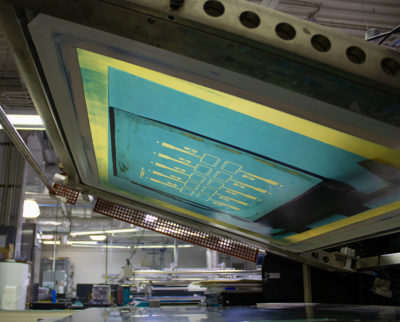
The most common way to print electrical components is through precision screen printing. Top-of-the-line screen printers allow for the tiniest traces of ink to be printed onto substrates.
Printed electronics use conductive inks such as silver, carbon, chloride, and copper. These inks allow electricity to flow through the ink. Conductive inks can be printed onto a variety of materials.
The possibilities for printed electronics are endless because they come in many different types, including printed heaters and biosensors. Printed electronics are used in industries from automotive to medical. In the medical industry, printed heaters and biosensors have life-saving applications.
The Advantages of Printed Electronics
Printed electronics have many advantages; they are relatively low-cost, most often flexible, sometimes stretchable, and can be applied in several different ways. 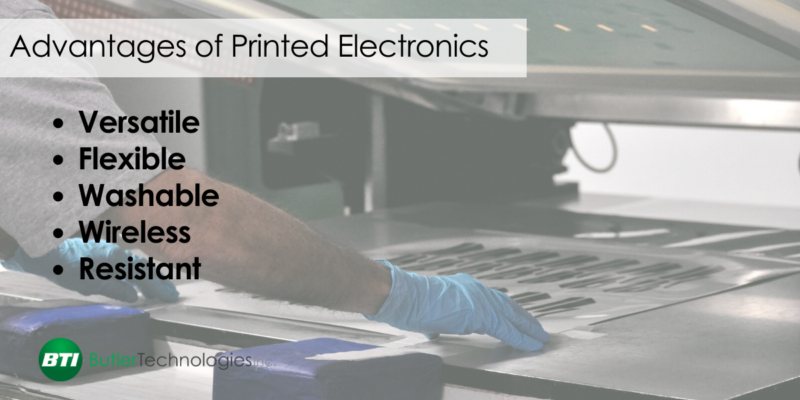
-
Printed electronics are versatile.
Some printed electronics can be heat transferred or sewn to textiles, some can be applied directly to the skin using a bio-compatible adhesive, others can be applied with pressure-sensitive adhesive, sonic welding, or otherwise mechanically fastened.
-
Printed electronics can be flexible.
A combination of different inks and materials allows for the design to flex, bend, and stretch with the user. This allows them to adhere to a piece of fabric worn on the body.
-
Printed electronics can be washable.
Specialty inks are specifically created for wearables. The technology can be washed and reused up to 100 times.
-
Printed electronics are wireless.
This innovative technology uses software and smartphone apps to gather user data. Printed electronics free a patient from being tangled in wires and stuck by an outlet.
-
Printed electronics can withstand harsh environments.
Some materials can withstand constant cleaning with harsh materials in the medical field. Printed electronics can be custom made for durability and will be able to last even in safety and defense situations.
What Printed Electronics are Used in the Medical Industry?
Several types of printed electronics are already in use in the medical industry across the world. The main types of printed electronics used in the medical field are flexible printed heaters, biometric sensors, and e-stimulation sensors.
Although printed heaters and biometric sensors are relatively new technology, these innovations have already made significant changes in healthcare.
What are Flexible Printed Heaters? 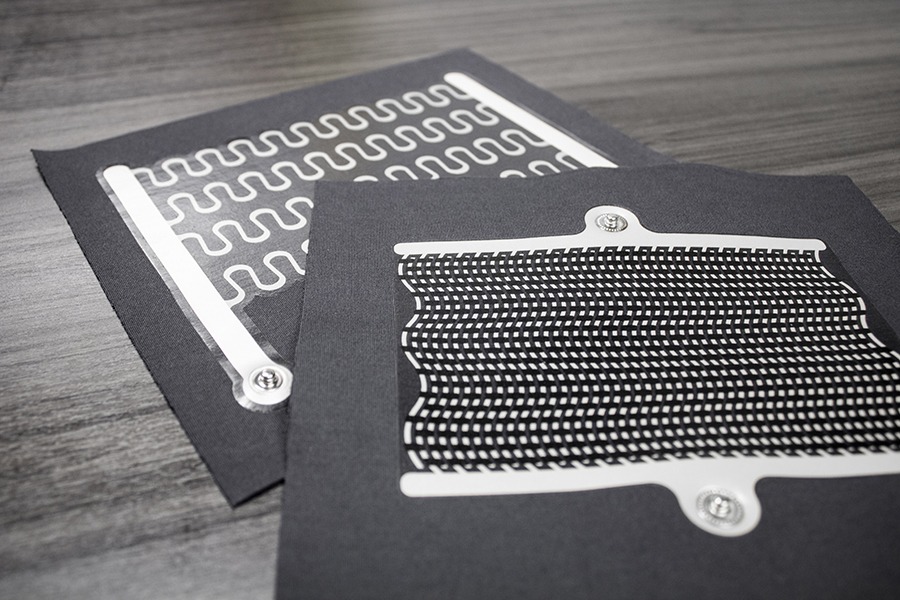
Flexible printed heaters
are a relatively new technology created to eliminate the need for bulky-wired heating elements. In simple terms, printed heaters are functional inks that are screen printed onto a flexible material.
Precision screen printing is used to print conductive and resistive inks on flexible materials. Common print materials are polyester, polycarbonate, or polyimide – Kapton RS conductive films. They can also be printed on thermoplastic polyurethanes known as TPU. TPU heaters are typical for the garment and medical industry because of the flexibility and elasticity of the material.
Flexible printed heaters
have several advantages when compared to traditional wire heaters.
Medical Uses for Flexible Printed Heaters
Many assume the best use for flexible printed heaters is in outdoor garments, but they have a variety of uses in the medical field, including: 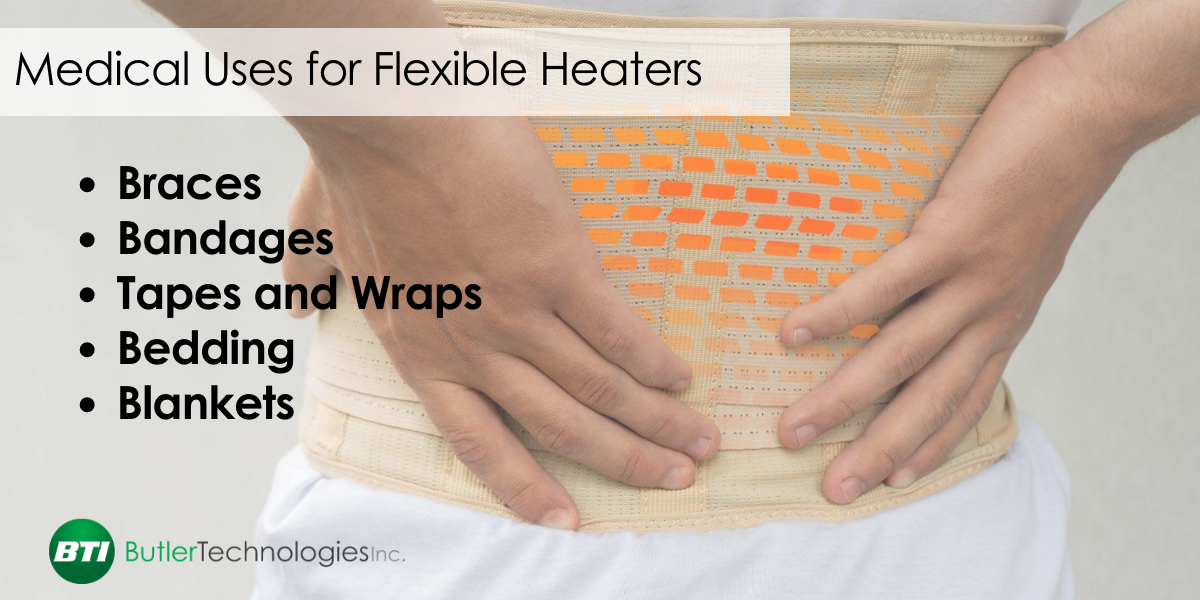
- Braces
- Bandages
- Tapes and Wraps
- Bedding
- Blankets
The most common use for flexible printed heaters in healthcare is a heated back or neck brace. Applying heat helps muscles relax and the body heal.
Flexible printed heaters can also be applied to bandages to help speed up wound recovery time. Since printed heaters use thin, flexible materials they can be applied directly to a bandage and move with the patient. TPU substrates are the best base for heated wound bandages due to their flexibility.
Heated bedding is another common use for flexible printed heaters. Hospitals can offer heated blankets or bedding to patients to make them more comfortable.
Flexible printed heaters can also be a life-saving option for babies that are born prematurely. Premature infants need a warm bedding environment that flexible printed heaters can safely provide.
Since flexible printed heaters are battery-operated, they are perfect for EMS personnel dealing with cases of hypothermia or emergency departments treating shock. They can be easily transported and used in a variety of medical situations.
What are Biometric Sensors?
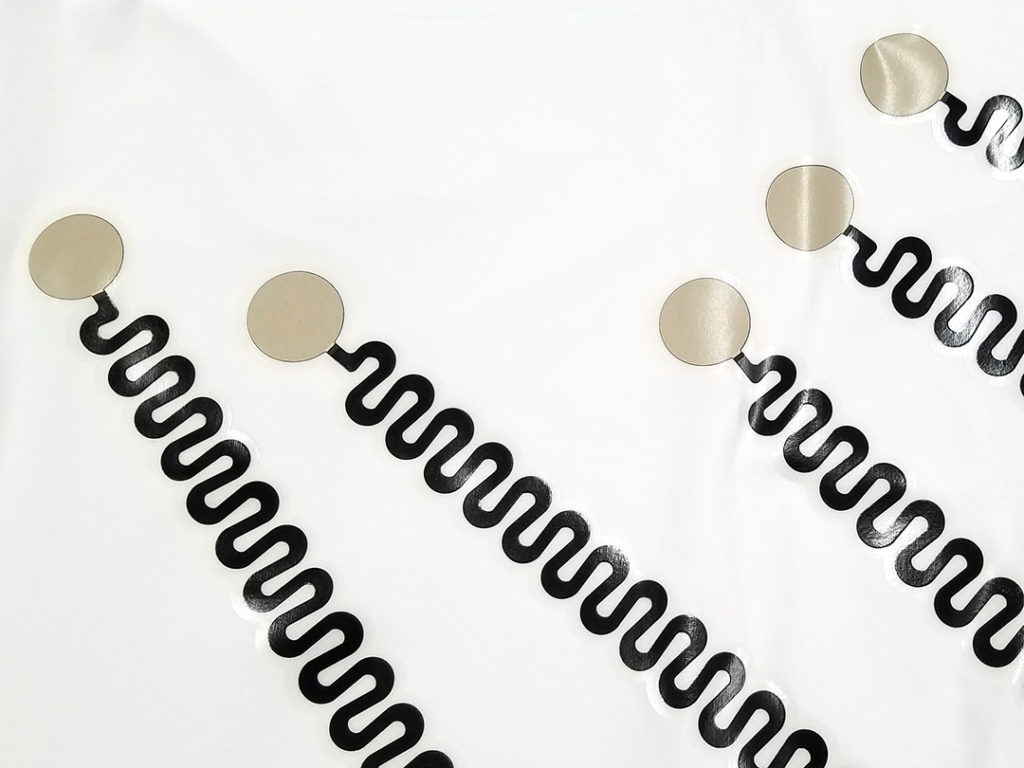
The medical industry uses sensors to monitor patient vitals. One of the worst things about most of the sensors in hospitals today is the bundle of wires.
Luckily printed electronics have solved that problem. With printed electronics, the electricity flows through traces of conductive carbon or silver inks instead of wires. Encapsulant layers can be added to protect the sensor and make it washable too.
Sensors can be applied directly to the skin, without the need for gels, to get an accurate reading. Because of the flexibility of the sensors, they can also be adhered to garments to track vitals and muscle activity. Making them easier, more convenient, and more comfortable to wear than traditional wire sensors.
Data can be tracked through a Bluetooth connection or smartphone app. This allows doctors to easily access patient vitals from a distance and even when the patient is at home.
Medical Uses for Biometric Sensors
There are two main types of sensors that are used for tracking patient vitals in the medical field: biosensors and biometric sensors. A biosensor refers to a sensor that requires biological liquid. A biometric sensorrefers to a sensor that requires biological electrical impulses.
At Butler Technologies, we can produce both biosensors and biometric sensors. This blog focuses on biometric sensors because of their varying technological applications.
Biometric sensors can be incorporated into articles of clothing, as well as directly applied to the skin, allowing for quick and continuous monitoring of at-risk patients. Because of their versatility, biometric sensors have a variety of uses in the medical field, such as tracking:
- Heart rate (EKG)
- Respiratory rate
- Temperature
- Muscle fatigue
- Muscle excursion (EMG)
- Brain waves (EEG)
The most common use for a biometric sensor is to track heart rate or respiratory rate. Most of the American population already wears a biometric sensor on their wrist in the form of a smartwatch. But there are so many other potentially life-saving applications for biometric sensors in healthcare. 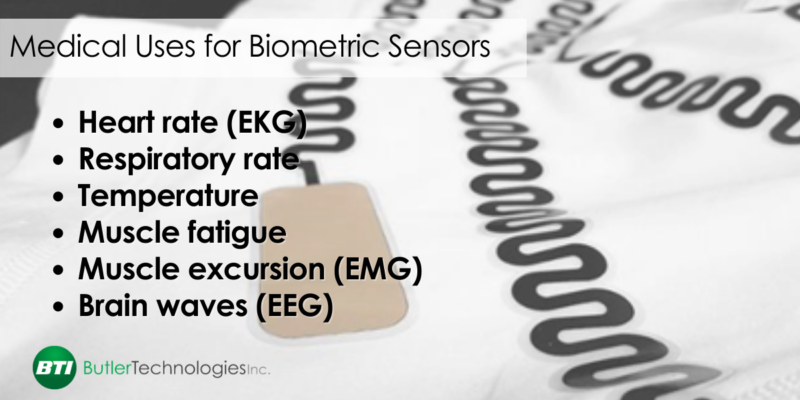 Biometric sensors help to detect health concerns prior to the onset of symptoms. With temperature monitoring, the sensor will notice a change before the patient. That data can then be easily transmitted to a healthcare professional via Bluetooth or smartphone app.
Biometric sensors help to detect health concerns prior to the onset of symptoms. With temperature monitoring, the sensor will notice a change before the patient. That data can then be easily transmitted to a healthcare professional via Bluetooth or smartphone app.
By monitoring muscle activity, biometric sensors are useful for the most active and inactive patients. For active patients, biometric sensors can recognize muscle strain or fatigue. Actively monitoring muscle activity with biometric sensors can help prevent injury.
For inactive patients, biometric sensors can be used in physical therapy or rehabilitation. Physical therapists and doctors can track how well a muscle is recovering after surgery or injury with biometric sensors.
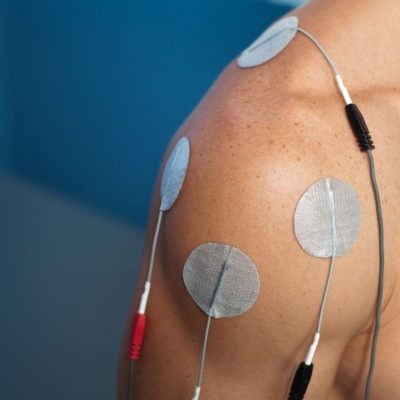
What are E-Stimulation Sensors?
Electrical Muscle Stimulation (EMS) sensors, often called “e-stim,” are like biometric sensors but instead of receiving electrical impulses, they send them. Electrodes are printed onto a pad that sends electrical impulses into the body.
E-stim sensors have several uses in the medical field already. Electronic pulses are sent into specific nerves to make muscles contract, speeding up recovery times. They are often used in physical therapy to stimulate nerves and muscles. Similar to flexible printed heaters, they can help speed up wound recovery time.
How Printed Electronics Make a Difference
Remote patient monitoring or at-home healthcare will play a pivotal role in medical care moving forward, especially with the COVID-19 pandemic still impacting societies around the world.
Doctors and healthcare professionals now can measure patient health vitals from remote locations, easing the stress of traveling to doctor and hospital visits, and minimizing opportunities for exposure to contagious environments. 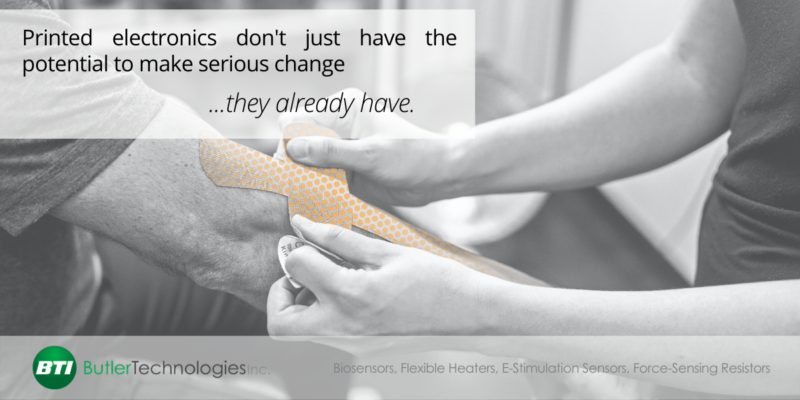
Printed Electronics Offer Low Costs
The most important benefit of printing is low-cost volume fabrication. Because of their flexibility and stretchability, printed electronics can be printed on a variety of low-cost materials. The lower cost enables more innovation.
The Possibilities are Endless
The possibilities for printed electronics in the medical field are endless. Whether it is adding a printed heater to your product or a new application for a biosensor, your ideas inspire us. Designing, engineering, and manufacturing new medical devices and technologies is one of our many goals. Contact Butler Technologies, Inc. for your next flexible printed heater or biosensor project.
Meet the Author

Courtney Houtz is the marketing lead for Butler Technologies, Inc. In her role, she is responsible for content strategy, branding, and project management. She is a graduate of Michigan State University with a degree in social relations and policy.
